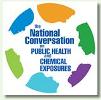The standard covers electrical and fire safety, VOC emissions, materials safety, and stability and load performance, and it includes requirements for desks, chairs, tables, visual communication products, audio-visual equipment, seating equipment, flooring, lab equipment, and more.
MSHA decided to distribute this alert based on testimony delivered during a House Education and Labor Committee hearing in Beckley, W.Va., in May that raised serious questions as to whether or not the Upper Big Branch mine was properly following ventilation standards prior to the explosion on April 5.

At one of the sites, the farmer-owned company failed to test the atmosphere before entry and to have an employee entering wear a safety harness and lifeline. It also failed to post an employee to observe the entry. Both facilities failed to turn off and lock out power to the auger before workers entered the grain bins, investigators said.
The agency's May 2010 request for information attracted comments for and against a rulemaking that would address workers' protection against exposure to H1N1, TB, and other diseases.
The 24 alleged serious violations that resulted from a site-specific targeting program investigation included a failure to have at least two suitable gas masks available and accessible; lack of developed confined space procedures; and grinding wheel, compressed air, and electrical shock hazards.

It was one of the five large unions to join the Change to Win Coalition in 2005, targeting high-growth occupations in the U.S. economy, including health care, transportation, and hospitality.

Last year's event in San Antonio, Texas (pictured), drew 2,836 attendees representing all areas and professions affiliated with the safety and health industry. For this year's conference in Orlando, organizers are expecting to up that number to at least 3,000.
It cautions, however, that this case study of its use in disinfectant sprays, now released for public comment, does not draw conclusions about potential health risks.

A new study by two Albanian researchers has found prevalence varying between 19.2 percent and 25.7 percent among workers in the metallurgical industry.
In addition, OSHA issued the company 50 serious and two other-than-serious violations for failing to provide proper protective equipment for employees working with lead and other extremely dangerous dust and chemicals, and failing to develop or implement a hazard communication program, among other things.

The company also agreed to spend at least $500 million on safety measures at its Texas City plant. Secretary of Labor Hilda Solis today said "The size of the penalty rightly reflects BP's disregard for workplace safety."
The acquisition of Sperian shares held by Essilor International, Ginette Dalloz, and Societe Civile Familiale Dalloz means the current tender offer until Sept. 2 remains on track.
The company received repeat citations for failing to make a reasonable estimate of employee exposure to hazardous chemicals such as hydrogen sulfide and carbon monoxide; it received willful citations for failing to implement confined space entry procedures.
According to the Department of Justice, the amount of the civil penalty is “precedent-setting” yet “appropriate in light of the unacceptable risk” created by the underground storage tanks at the defendants’ 17 gas stations in Maryland and Delaware.

The winners were chosen by a vote of HHS employees. Secretary Kathleen Sebelius praised them and said innovation "is the lifeblood of continual improvement in our department's performance in serving Americans."
A report released Aug. 2 by Safe Work Australia evaluates two possible approaches for using control banding to ensure safety when working with nanomaterials but admits workplaces there have little knowledge of it.

Recently, a model of genuine worker participation has surprisingly emerged in China.

More than 50 public meetings are in the books for this project of CDC and ATSDR about chemical exposures and public health. An action agenda is scheduled for release in December.
Recent FDA testing has found Listeria contamination throughout the defendants' facility and in a sample of its finished product. Although the company promised to address and correct deficiencies following inspections in 2006, 2007, and 2009, a 2010 inspection confirmed that the company continued to operate without adequate controls, the agency said.
Among the wide range of dangers inspectors listed were the risk of laceration, amputation, or crushing injuries; electrical hazards; fire and explosion hazards stemming from combustible dust; improper storage of flammable liquids; and insufficient monitoring of exmployees’ exposure to hexavalent chromium.